#mid century pottery
Text
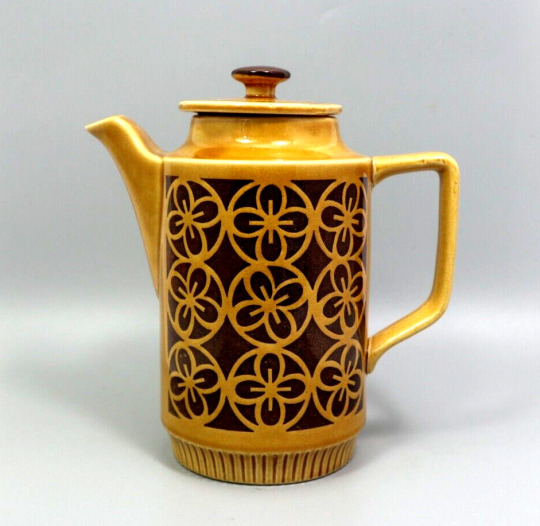
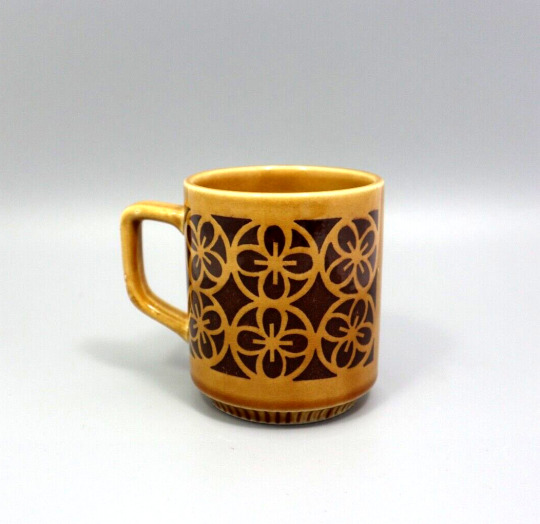

Vintage Japanese Ceramic Stoneware Retro 1970s Mid-Century
Coffee | Tea Pot Jug
Mug
Milk Jug and Sugar Bowl
SWtradepost - eBay
#mid century pottery#retro coffee set#vintage japanese stoneware#vintage stoneware#japanese ceramics#1970s style#retro style#coffee#coffee pot#tea#tea pot#mugs#milk jug#sugar bowl
14 notes
·
View notes
Text

Train beaker
Mug
1969 (designed), William John Clappison
from the V&A collection;
We'd call it a mug now, but back in the day it was still a beaker.
2 notes
·
View notes
Text

An Attic Black-glazed Oinochoe
Circa mid-5th Century B.C.
#An Attic Black-glazed Oinochoe#Circa mid-5th Century B.C.#terracotta#pottery#ancient pottery#ancient artifacts#archeology#archeolgst#history#history news#ancient history#ancient culture#ancient civilizations#ancient greece#greek history#greek art
65 notes
·
View notes
Photo

Ceramics store, 1965. From the Budapest Municipal Photography Company archive.
160 notes
·
View notes
Text

Soup Bowl - 1970s
#1970s vintage#vintage crockery#vintage pottery#1970s collectibles#mid century britain#mid century#mid century life
20 notes
·
View notes
Photo

DC Metro Kids Room
Example of a small classic boy carpeted kids' room design with blue walls
#vintage lane#pottery barn kids star lamp#mid century dresser#midcentury credenza#land of nod coat rack#ralph lauren constellation wallpaper
0 notes
Text
#asian decor#mid century modern#satsuma vase#cherry blossom vase#vintage made in japan#vintage home decor#japanese pottery#satsuma pottery#crackle vase
1 note
·
View note
Photo

Concrete Pavers in Portland
#An example of a large mid-century modern full sun backyard concrete paver water fountain landscape in spring. seat wall#pottery#custom cap#column#solider course#river rock
0 notes
Photo

Home Bar - Single Wall
#Mid-sized trendy single-wall light wood floor wet bar photo with open cabinets#marble countertops and marble backsplash succulents#masculine style#mid century modern sofa#surf style#pottery#marble#beach cottage
0 notes
Text

Alvino Bagni and Aldo Londi come together
1 note
·
View note
Photo
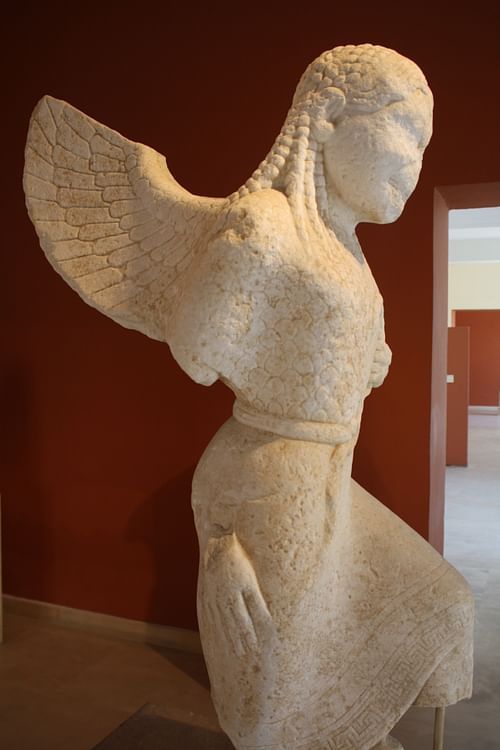
Paros
Paros is an island in the Cyclades group in the central Aegean. It is the third largest island of the Cyclades and its position on important sea routes between mainland Greece and the coast of Asia Minor made it an important centre from the early Bronze Age through to Roman times. The island was also famous for the high quality of its marble which became a popular material for sculptors and architects throughout antiquity.
Bronze Age Paros
First inhabited from c. 3200 BCE (or perhaps even earlier), important settlements from the Early Cycladic Period include those at Drios, Avyssos, Galana, Gremna, Kampos, and Plastiras. The relatively high level of culture in the early Bronze Age is attested by the wealth of decorated pottery finds and in Cycladic sculpture which produced elegant marble figures rendered in a minimalistic style.
At the island's capital Parikia (Paroikia) on the west coast the first indications of settlement date to the early 2nd millennium BCE and the area was continuously occupied through Minoan and Mycenaean times and settled by colonists from Attica c. 1000 BCE being occupied until around 700 BCE. On the north coast at Naoussa there was a major Mycenaean settlement which prospered in the 13th century BCE but was destroyed in c. 1200 BCE. Nevertheless, the site was reoccupied from the 10th century BCE and once again enjoyed a period of prosperity from the 9th to the mid-7th century BCE. Koukounaries on the east coast was also an important Mycenaean centre in the 13th and 12th centuries BCE and continued into the mid-7th century BCE. It was here at Koukounaries that the oldest temple on the island was built, the temple to Athena dating to c. 700 BCE and which survived into Classical times.
Continue reading...
58 notes
·
View notes
Text

Rome’s 'Lost' Imperial Palace 'Domus Tiberiana' Reopens
Until recently a crumbling and off-limits ruin near the famous Colosseum, the Domus Tiberiana palace — built in the first century AD and beloved by Nero — hopes to once again take its place as one of the city’s top tourist attractions.
The ancient palace sits on Palatine Hill — the city’s oldest hill, overhanging Rome —from where imperial dynasties ruled for centuries. But over the years, the site fell into disrepair and in the 1970s, the Domus Tiberiana site was shut due to the structural instability of some of the ruins. The closure left behind what many Romans described as a “black hole” in the capital’s archaeological heart.
Now, after a six-year makeover, the palace has reopened its doors as a “diffuse museum,” with findings and frescoes scattered across the site to provide visitors with an insight into the palace’s ancient grandeur.
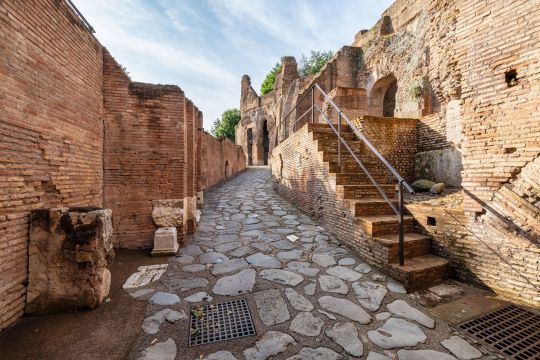
And it was grand. The Domus Tiberiana was Rome’s first imperial palace, built by the emperor Tiberius who combined and incorporated the pre-existing noble mansions built on the hill. Occupying over four hectares, the palace featured residences alongside large gardens, places of worship and rooms for the emperor’s Praetorian guard.
As the seat of Rome’s power and politics, Domus Tiberiana held a prime location, high above the Palatine and Roman Forums, offering its occupants a “balcony view of the city.” Over time, the Domus was embellished and enlarged by other emperors including Nero, who was crowned on its steps aged just 16, in 54 AD.
Alfonsina Russo, director of the Colosseum’s archaeological park (in which Domus Tiberiana falls) and lead archaeologist on the renovation, said that ancient antiquities, many exceptionally well-preserved, were unearthed during the project.
The artifacts — bright stuccos, frescoes, amphorae, potteries, looms, terracotta, and divinity statues related to the cults of Isis, Dionysius and Mithras — offer visitors a trip through time, said Russo.

“They make this place — formerly (inhabited) by aristocratic families, then Roman emperors — feel alive again,” she said. “There are seven exhibition rooms full of extraordinary finds, starting with those preceding the original construction of the palace when aristocrats lived in mansions before Tiberius subsumed them into the Domus.”
Among the newly-exposed and frescoes are some of the earliest paintings of lemons (considered an exotic fruit in Ancient Rome, as they hailed from the Far East) and a depiction of a gladiator, proving that the era’s gladiatoral games were appreciated by rich families, explained Russo.
The imperial palace remained in use until the 7th century, when it became the papal residence of John VII. In the mid-16th century, the aristocratic Farnese family — who were powerful local landowners — built the lavish Orti Farnesiani gardens on the site, adorning it with ornaments and sculptures of nymphs, satyrs and fauns.
“This monument speaks of history,” Russo added. “We have restored (Domus Tiberiana) to its past splendor, but more work lies ahead.”
Indeed, painstaking efforts have been made to blend old and new. A series of majestic, reddish-brown vaulted arches that greet visitors having been carefully reconstructed with the same materials as ancient Romans used in the past.
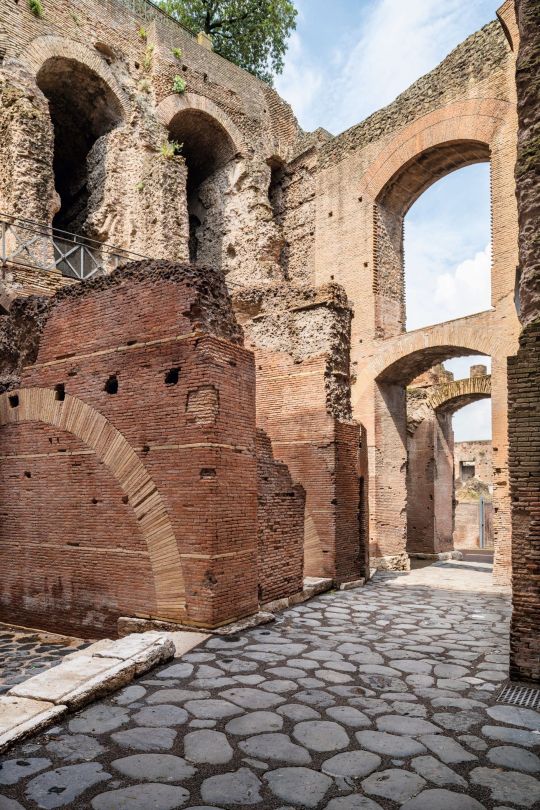
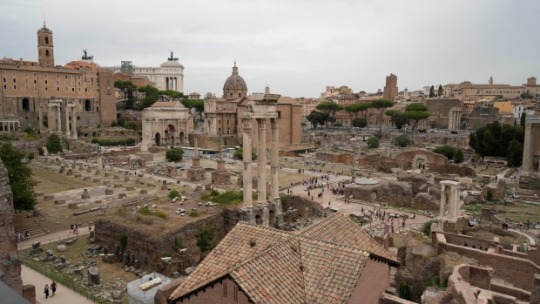
“What makes this revamped Domus unique is the architectural style,” said Russo. “We managed to use original materials to reinforce and strengthen the handmade 15-meter (50ft) tall front arches (which run alongside the palace’s) ancient paving.”
It has certainly caught the public’s attention. Since reopening at the end of September, Domus Tiberiana has attracted some 400,000 visitors, a “huge success,” said Russo, adding that she believes that this incarnation of the Domus Tiberiana offers visitors the most “evocative” visit in generations.

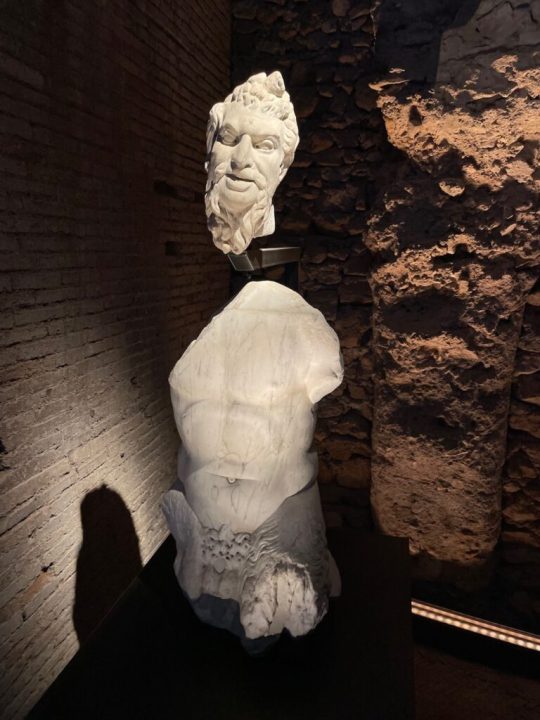
Archaeologist and scholar of ancient Rome Giorgio Franchetti saidN that, in the reopening of the Domus Tiberiana complex, Rome has “recovered a lost jewel.”
“The Palatine Hill has always been the stage of Rome’s power politics,” he said in an interview. “Tiberius likely chose this spot to build the palace as it was where his family residence stood. There aren’t many places like the Domus Tiberiana where you can really breathe the past.”
By Silvia Marchetti.
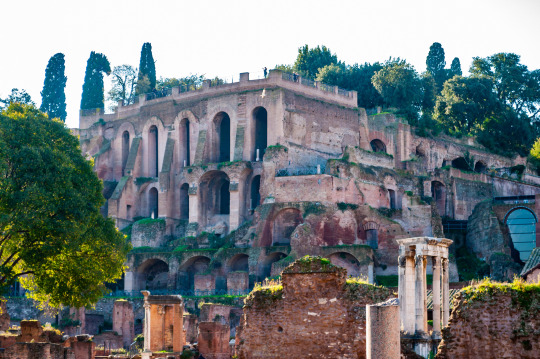
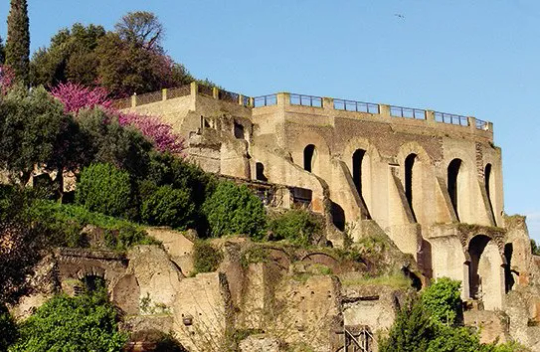
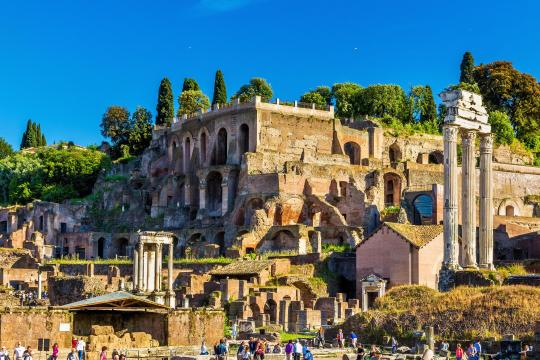
#Rome’s 'Lost' Imperial Palace 'Domus Tiberiana' Reopens#Domus Tiberiana palace#Palatine Hill#Emperor Tiberius#Emperor Nero#ancient artifacts#archeology#archeolgst#history#history news#ancient history#ancient culture#ancient civilizations#ancient rome#roman history#roman empire#roman emperor#roman art
270 notes
·
View notes
Text



360th Anniversary of Bohun's Death
17.02.1664 Ivan Bohun was executed in the Polish military camp


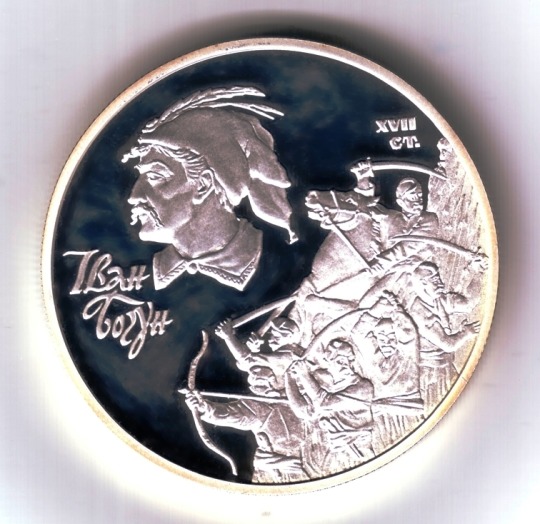

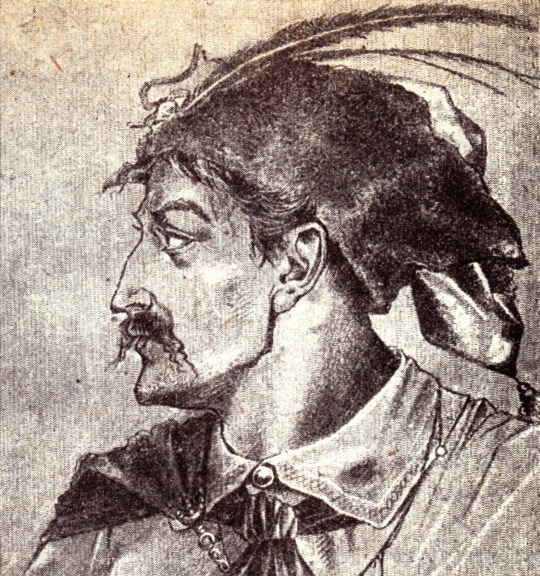


Ivan Bohun (Іван Богун) was a real person, an authentic Ukrainian Cossack hero from the mid-17th century and one of the most important Cossack commanders during the uprising of Bohdan Chmielnicki (Bohdan Khmelnytsky, Богдан Хмельницький), which started in 1648 ('Ukrainian Independence War').
As such, he has many diverse appearances in the Ukrainian culture and in the Polish culture (in literature, folklore, visual arts, music, opera, theater, cinema, etc.). Perhaps, the most famous worldwide (or just Tumblr-wide) of them all is the novel "With Fire and Sword" ("Ogniem i mieczem") by the Polish writer, Henryk Sienkiewicz, from 1883/1884. H. Sienkiewicz changed Bohun's name to Jurko, but described some of his authentic deeds, i.a. the role, he played during the battle of Beresteczko, 1651. The novel itself, as a part of the well-known "Trylogia" (which occupies an important place in the Polish culture), has many adaptations in art, theater, radio and cinema. The most famous of them is the Polish film from 1999, directed by Jerzy Hoffman. So...
Bohun's appearance in that film is not everything, in fact, it is only the tip of the iceberg of Bohun's myth. There is much more to explore and admire.
More information about artworks presented in this post you can find here:
It is a fan&didactic account, existing only for the Cossack Heroes glory and promoting Ukrainian heritage worldwide. Copyright belongs to the Artists/Museums.
#ivan bohun#jurko bohun#ogniem i mieczem#with fire and sword#trylogia#trylogia sienkiewicza#ukrainian history#cossacks#cossack heroes#ukrainian heritage#ukrainian culture#polish culture#ukrainian art#ukrainian literature#polish art#polish literature#trylogia sensem życia
137 notes
·
View notes
Text
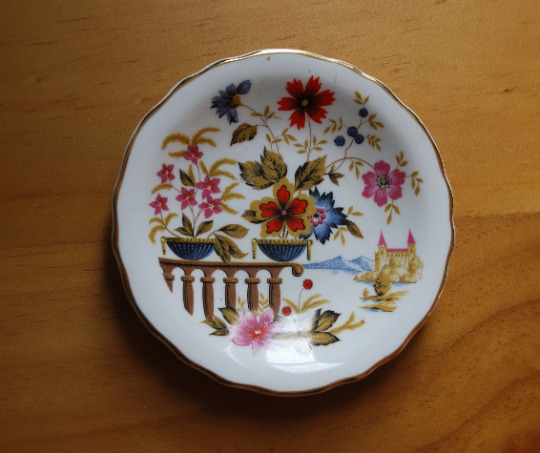
Royal Grafton Dish - 1970s
0 notes
Text
Touhou Project theory: the Scarlet Devil Mansion's heavy metal poisoning
something an intro idk how to do this
WARNING! LONG POST AHEAD!
Potential sources of heavy metal toxins
If we look inside the mansion there's a lot of red carpet. One pigment for red is vermilion, which which is derived from the mercury mineral cinnabar which is highly toxic. Vermilion was a highly valued and prestigious dye historically, befitting of an aristocrat's mansion. Another detail is in one of these screenshots the carpet is a rather dark red, and while many red pigments slowly turn pink as they fade vermilion actually darkens and turns brown (similar to blood), which you can see in the painting below. This could be a lighting effect, though.
Another possible pigment is minium, which is derived from lead and is also toxic.



We also see a fair amount of white in the mansion, on the table cloth in the above image and many of the residents' clothing such as Sakuya's apron and Flandre's mob cap. One historical pigment for white is lead white, which is also derived from lead. Lead white was also used in cosmetics to whiten skin, for another potential source of poisoning.
Another potential source is lead from pewter. Given Remilia's weakness to silver she is not likely to use sterling silver for metal objects such as tableware and tea sets. Pewter, a broad term for various tin alloys, is a popular alternative she might use. However, many older pewter alloys contained large amounts of lead as its toxicity was not understood. For a long time lead was actually used in toys since it was cheap and not understood.
There's also a possibility of toxins leaching into food or drink through glass or the enamel of pottery. Lead-crystal glass slowing leaches lead into drink and if Remilia happened to buy any Uranium glass, which became popular during the mid 19th century, and peaked between 1880 to 1920, that would leach uranium. If any pottery uses toxic materials in the enamel that is another source of poisoning.
Potential victims
Sakuya Izayoi and Patchouli Knowledge are the two most human residents of the Scarlet Devil Mansion. Both display symptoms of heavy metal poisoning.
Patchouli is stated to have anemia and weak muscles. Both of these can occur from lead poisoning, though anemia typically takes a very large dose.

Sakuya Izayoi is described as "spacey", which is defined by the Merriam-webster dictionary as a synonym of spaced-out which means "dazed or stupefied by or as if by a narcotic substance,". Given how both mercury and lead mostly affect the nervous system, and both can cause memory impairment, tremors and incoordination, it makes sense that someone suffering from heavy metal poisoning might be compared to someone who is drunk or high.
For more definitive proof that Sakuya has mental difficulties, we should look at the fact that Sakuya does not know what oxygen is. While one might assume that this is just because she lives isolated from the modern world, Oxygen was first isolated before 1604 by Michael Sendivogius, and given a name and recognized as an element in 1777. Oxygen could be an important discovery for her position considering its role in food preservation. Sakuya has had over two centuries to learn that oxygen exists. Keep in mind that she lives with Patchouli Knowledge, a professional scholar, who may have been residing in the mansion for nearly a century. This could suggest serious memory and learning issues, symptoms of both lead and mercury poisoning.
While Sakuya does not display the the delayed reactions or loss of coordination associated with lead and mercury poisoning, her powers over time may prevent this. If she trips and drops something, which might normally cause someone to notice her decreasing coordination, she can just stop time and undo it.
Another interesting, though flawed, possibility is that the fairy maids have heavy metal poisoning as well. The fairy maids are stated numerous times to be bad at their jobs, spending most of their work hours only able to maintain themselves, but were still hired by Sakuya and continue to be employed by Remilia. With symptoms of anemia, weakness, memory loss, pain, lack of coordination and more it's easy to see how lead and/or mercury poisoning could make a maid bad at their job. Fairies in Touhou Project are often compared to children who are especially susceptible to lead poisoning. The fairy maids would probably slowly improve at their jobs since first being hired, and plateau and slowly decrease as increasing heavy metal levels in their blood poison them and affect their work. Perhaps Remilia and Sakuya see this happen with all the maids and assume it's just how maids or fairies work.
While one might object and that youkai would not be affected by human medical conditions like lead or mercury poisoning, there is a tiny bit of precedent for this. There's an exchange in Touhou 19 where Sanae recommends that Mamizou stop smoking so much: "I don't suppose that smoking too much is good for you. Nor is drinking." This, if admittedly stretched, suggests that certain things that are unhealthy for humans may be unhealthy for certain youkai and similar beings as well. Youkai are also affected by alcohol as well and get drunk. While this might be because of the idea that drinking makes you drunk, is it possible that if knowledge of lead and mercury poisoning spread to the humans of Gensokyo, and they started believing that lead makes you sick, that belief might cause certain youkai and related beings to get sick as well?
Problems with this theory
Neither Patchouli nor Sakuya show certain physical symptoms of mercury poisoning: Skin discolouration (usually reddening), hair loss, or peeling of the skin. Let's compare some artwork from Touhou 6:




As we can see, Reimu has the reddest cheeks which is inconsistent with Sakuya and Patchouli having mercury poisoning. However, an interesting connection is that Reimu wears mostly red, and considering it is traditional to paint the Torii gates of shrines vermilion to ward off evil, it is actually more possible than I initially thought that she could have mercury poisoning as well.
Some might object that Patchouli Knowledge, being a youkai mage, might be immune to toxins. Considering how wizards are stated to often have weak bodies due to interaction with dangerous substances, I find this unlikely. One might argue something similar for Sakuya because of her time manipulation, but we only see her use time manipulation consciously, so we aren't sure. The main question would be whether the process that slows her aging also negates most of her bodily functions, so I guess this would depend on whether we see her eat and breath, and since she gets tired from hypoxia in Touhou 18 she must be breathing and is probably susceptible to poison as well.
The main problems I can think with this theory of are with the fairy maids having heavy metal poisoning as well, which was not the main subject. It's been explained that Remilia goes for quantity over quality for her staff, and Sakuya presumably hires anyone with the most basic of skills. However, it could be possible that Remilia goes for quantity over quality because they all end up low quality due to their poisoning. Given that fairies are used to playing and pulling pranks they are probably unsuited to hard work. The reasoning that they might still be affected by poison is rather weak since much of it relies on a single remark from Sanae, who might be wrong. I still found it interesting to consider.
91 notes
·
View notes
